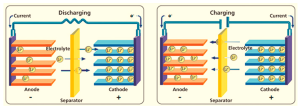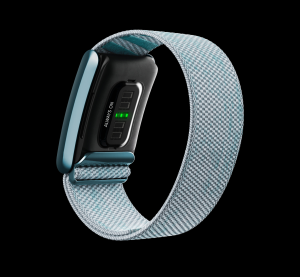What is battery electrolyte and how does it work?
Whether it is toys for kids, wireless power tools or electric cars, batteries are becoming a standard part of our daily lives. The key component of a battery is the internal battery electrolyte.
Today, we are studying what is 12v 42ah Lifepo4 Battery electrolyte and how it can maintain the life of your 12v 42ah Lifepo4 Battery . Let’s dive in!
What is battery electrolyte?
The battery electrolyte is a solution inside the battery. Actually, it depends on the type of battery as it can be a liquid or paste-like substance. However, the role of the electrolyte is the same regardless of the battery type: it transfers positively charged ions between the cathode and anode.
How does battery electrolyte work?
There are three main components of the batteries– the negative electrode, the anode and the electrolyte that separates the two erminals. Electrolyte is a chemical substance that allows electric charge to pass between two terminals. The electrolyte brings the chemicals needed for the reaction into contact with the anode and cathode, thereby converting the stored energy into usable electrical energy. This response powers the connected device, whether it’s a light, a vacuum cleaner or an electric car.
What is the battery electrolyte made of?

In fact, different types of batteries relys on different types of different electrolytes and its chemical reactions. For example, lead-acid batteries often use sulfuric acid to produce the desired reaction. Zinc-air batteries rely on zinc oxide with oxygen to react. Potassium hydroxide is the electrolyte in ordinary household alkaline batteries. The most common used electrolyte in lithium batteries is lithium hexafluorophosphate (LiPF6) and other lithium salt solutions.
If you think back to high school chemistry classes, you may remember to wear goggles and other protective equipment when handling chemicals. The chemicals used to produce chemical reactions in batteries are usually dangerous, so take appropriate precautions when handling batteries and their electrolytes.
Can I add electrolyte to a battery?

Yes, you can add electrolyte to the battery, but only if it is a non-sealed wet battery. Checking the charge in the wet battery is standard maintenance that you should perform on a regular basis.
Although the electrolyte contains water and sulfuric acid, you should not add anything to the lithium polymer battery except distilled water. During normal operation, a wet lithium polymer battery will only consume water.
If your lithium polymer battery is sealed or does not consume electrolyte when exhausting, you cannot add electrolyte. You don’t need it either. No exhaust is one of the big advantages of choosing Li-ion batteries or AGM as they require very little maintenance while using.
These are wet batteries. When these batteries are needed to add the new acid new acid and when they are used, they require regular addition of water.
What are the components of lithium batteries?
The composition of the lithium battery electrolyte is depending on the type of lithium battery and its chemical composition of the reaction. Most lithium batteries use liquid electrolytes in organic solvents, such as LiPF6, LiBF4, or LiClO4.
But recent developments have made solid ceramic electrolytes such as lithium metal oxides and option for the batteries. The biggest advantage of solid electrolytes is to eliminate the leakage risk and flammability of liquid electrolyte battery, which is a safety risk of liquid electrolyte batteries.
Lithium hexafluorophosphate (LiPF6) is the most usual lithium salt in lithium-ion batteries. This solution creates an incredibly stable environment for Li-ion during the battery charging and discharging.
How do lithium batteries work?

Lithium-ion batteries use charged lithium ions to generate a potential between the positive and negative electrodes. A thin layer of insulator what we called a separator, is located in the electrolyte solution between sides of the battery. The separator allows lithium ions to pass through while blocking electrons, which keeping the two electrodes separated. During the charging process, lithium ions move from the positive electrode to the negative electrode through the separator. When discharging, the ions move in the opposite direction.
The movement of lithium ions produces a potential difference called “voltage”. When you connect an electronic device to a battery, electrons (not lithium ion) will flow through the device and power it.
Is lithium battery electrolyte safe?
To be honest, we can say boldly that the electrolyte in lithium batteries is safe. However, in the early years of lithium batteries, lithium batteries sometimes caught fire, also known as thermal runaway. However, fires are mainly caused by overheating, puncture, or overcharging of the solvent in the lithium battery.
As the most flammable component in lithium-ion batteries, electrolyte has always been considered closely related to its safety. All battery manufacturers need to optimize the electrolyte, because it is the ultimate means to improve the safety of lithium-ion batteries.
As technology advances, new options that can be used to improve the safety of lithium batteries are emerging. For example, Maxworld Power’s proprietary battery management system (BMS) shuts down the battery when it detects an unsafe condition. It can be said it is one of the safest batteries on the market.
Conclusion
All in all, battery electrolyte is the most criticial component of all battery types, and in most cases, you may never consider it. However, it depends on the type of battery that you are using, by knowing how the battery electrolyte works in the battery can greatly help extend its life.
Fortunately, when you invest in products like Maxworld Power batteries, there is much less maintenance work, and you can completely ignore the battery electrolyte.












